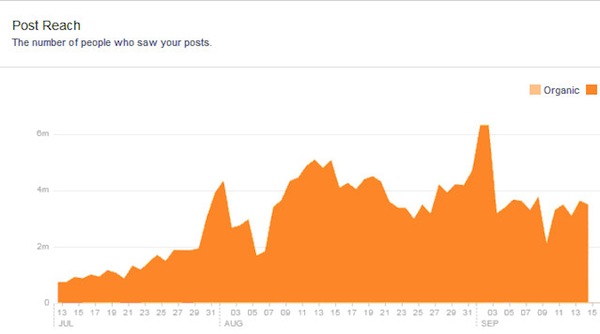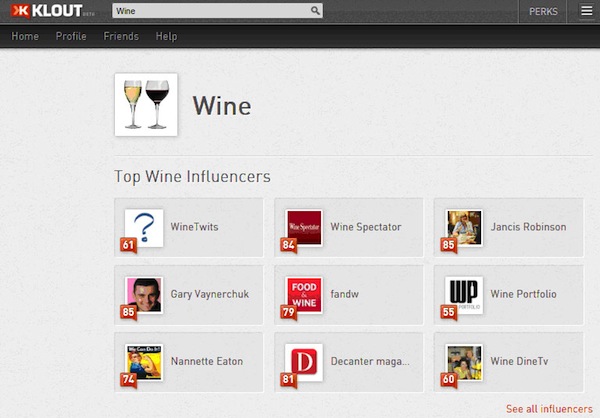
Suspending math rules for a second, the synergies between SEO and social media working together (if done properly) can make one plus one seem like four. Regardless of whether you’re in-house or agency-side, there are huge profits to be gained from both teams strategically working together.
A successfully executed joint venture will have both the social media managers and the SEO managers greatly benefitting in areas such as outreach and promotion, content creation, brand management and goal tracking, which essentially translates to lots and lots of dollar signs – for the client and in your bonus.
Here are the top three ways to set up and benefit from a powerful collaboration.
Tip 1: Leverage Promoted Posts to Scale Outreach and Link Building
Traditional link building can be made drastically more effective by tying in some strategic paid promotions.
As we all well know, the SEO team’s goal is to acquire more high-quality links, and the social media team’s goal is to engage the community and attract new audiences. While the goals may seem different, there is an ultimate way to achieve both.
Marty Weintraub, the genius extraordinaire of aimClear, has created the solution: Paid Organic Distribution. Essentially, how it works is you create some exceptional content and then post it on your blog. You then research on Facebook the right demographics who would most enjoy and thus best respond to the content. You really want to find the people who would not just engage with the content but also share it and likely even link back to it; then target them with promoted posts.
For example, for a post on traveling across Germany, some potential people to target could be:

It is amazing how low in cost this tactic can be. You could spend less than $25 a day and still see pretty dramatic results.
Paid organic has helped to dramatically scale up link-building efforts by reaching niches where the efforts would be welcome. SEO professionals can enjoy more targeted links and visits to the site:

Community managers can now successfully reach out to new audiences, get more engagement on the posts, and diversify the reach of posts. See below an example of the growth in likes as well as reach:


Best of all, the probability that this increased traffic to your site will convert is much higher, so this method could even help you hit profit goals in the short term as well.
When implementing Paid Organic on your own, be careful to:
- Be prepared for trial and error when it comes to selecting the audiences to target.
- Let the community manager and the SEO team work together to jointly pick the audience to target, with advice from the PPC teams.
- Make sure your content is really good; dull content won’t get you very far.
- Ensure the community manager responds in a timely manner to all comments to foster the engagement.
Tip 2: Create More Effective Content
 A joint brainstorming session based on solid analytics can help ensure a steady stream of killer content that works for you every time.
A joint brainstorming session based on solid analytics can help ensure a steady stream of killer content that works for you every time.
By working together, SEOs can benefit from the audience insights that the community manager brings, while the community manager will be appreciative of the opportunities to continuously grow and expand their audiences with a steady stream of power-packed content produced by the SEOs.
Make your joint brainstorming session all the more effective by arming yourself with the following key data points before you begin:
- Have the SEOs put together a list of which audiences and which types of content have resulted in the most effective link-building campaigns.
- Have the community manager pull together data on what type of content has gotten the most shares and audience engagement.
- Have the SEOs bring in their outreach plan for the next three months.
Now, keeping the above in mind, it will make it easier to know which audiences to expand to, how to better engage these high performing demographics and how to best channel your creative efforts. Knowing what gets the best responses and strategically planning ways to do more of what works and less of what doesn’t allows for the most effective spend of your budget dollars for content creation and outreach.
Additionally, by looking at the SEOs’ outreach plan for the upcoming months, the community manager can plan complementary blogs and audience engagement activities to pave the way for increased success for the link building to come. For example, if the community manager knows that an upcoming SEO special content piece features an exhaustive wine guide, they can foreshadow it on social media and start cultivating the right audience who will best respond to it.
Following your monthly brainstorming sessions, have your community manager be in charge of creating and maintaining the content calendar for the company with heavy input from the SEO team. Both teams can weigh in weekly to help plan future weeks and make any edits as needed, based on the success of the ongoing efforts.
Tip 3: Engage Influencers
Encourage the social media team to build strong relationships with influencers to help with link building.
For an SEO, having strong relationships with influential bloggers or site owners can make a huge difference in link building. One or two incredibly strong links will not only make the campaign more successful but can also help with sales by sending a large number of highly qualified leads to the website.
With a three- to six-month link-building plan in mind, the SEO team should provide the community manager with a list of key influencers to develop a rapport with. The community managers can then take the time to properly build up relationships with the influencers.
Use tools like Klout, FollowerWonk or Traackr to create lists of influencers for each topic.

Build the relationship slowly and carefully. Influencers likely get a lot of people engaging with them, but you can still stand out. Begin sharing their content or retweeting their posts, complimenting an endeavor of theirs or answering any questions they may pose. Be helpful and friendl – in a non-stalking way. Shared interests or passions can go a long way to breaking the ice.
Once the relationship is in place, you’ll get a better success rate of having them share your content or link back to you. It will also increase your brand perception and credibility on the social media platforms to see some engagement between your company and main influencers, so it has an additional benefit.
Do you have additional ways in which you’ve created a perfect harmony between SEO and social? Please share your thoughts in the comments below.





 A joint brainstorming session based on solid analytics can help ensure a steady stream of killer content that works for you every time.
A joint brainstorming session based on solid analytics can help ensure a steady stream of killer content that works for you every time.